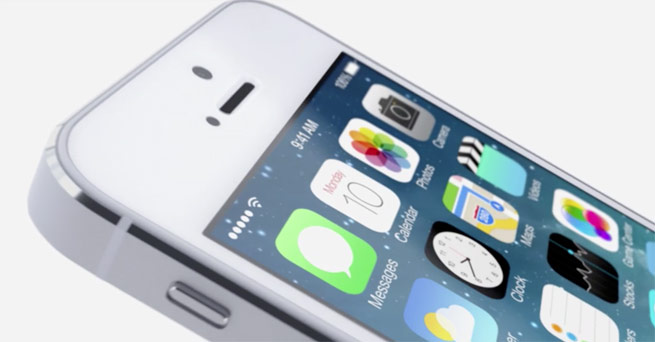J Schwan is the CEO and Founder of Solstice Mobile.
It’s no secret that Apple markets its products to consumers — from the Apple Genius bar, to sleek hardware design and its user-friendly mobile interfaces. The company’s latest version of iOS, however, has taken a giant leap toward appealing to enterprises, with security and developer features aimed at increasing mobile security, enhancing productivity and allowing more design flexibility for app developers.
iOS 7 isn’t just another upgrade for Apple; it’s the most noteworthy iOS upgrade since the iPhone first hit the market in 2007. With Apple’s impressive upgrade record for its user base, organizations that do not take advantage of iOS 7’s new enterprise features will end up serving an outdated app experience to a market of future-hungry end-users.
iOS 7 enterprise benefits
There has been a lot of buzz around the new iOS 7 features, but what are the enterprise implications of these features?
Device and Data Security: Building Enterprise Single Sign-on into iOS will ease the user experience and increase security significantly, providing advantages that third-party solutions cannot, such as deep integration with iOS services and device features.
Productivity, workflow, collaboration: With AirDrop Sharing for Apps, enterprise app developers can integrate real-time sharing of documents and content, providing a more efficient platform for sales tools, presentation tools and knowledge/collaboration tools. From an internal perspective, AirDrop will enhance the Quality Assurance process by allowing users to share screen shots rapidly on the device.
Contextual Computing and M2M: Apple’s iBeacon support (iBeacon is Apple’s term for Low Energy Bluetooth or Smart Bluetooth) will allow Apple devices to become a tighter part of the Internet of Things ecosystem. For example, iOS devices can integrate with third-party low energy Bluetooth transmitters to enable indoor navigation (i.e. indoor tours, indoor maps), device presence awareness (who’s in the room right now?), and automated physical-world workflow tracking (i.e. what service ticket should I work on based on what building I just walked into).
Scan to acquire Passbook passes: As of June 2013, Apple had 575 million iTunes customers, most of whom link credit cards to their accounts. A recent report estimates that Apple has more consumer credit cards on file than any other company in the world, including Amazon. If Apple is able to integrate a mobile payment tool into the Passbook app and connect to all of those credit cards, developers are much more likely to work with the platform. This could be a big boost for mobile couponing and bridging physical world campaigns with digital passes.
What’s most important for app developers?
There is a lot for developers to take advantage of in iOS 7 — features such as TextKit, Multi-tasking, Auto-layout and UIDynamics. A critical part of analyzing iOS 7 organizational readiness is looking at how enterprises can leverage capabilities to improve the user experience. The introduction of iOS 7 should be a trigger point for brands to look at their own design features.
In addition to user interface (UI) improvements, Apple is introducing flat design, which puts more emphasis on content over aesthetics. By placing content at the forefront of the experience, users can focus on the information at hand. Developers will need to balance three key areas: deference, clarity and depth.
Deference is the ability to allow the user to interact with the device and applications but remain simple and subtle enough that it doesn’t outshine the content. Apple has jumped on the “content is king” bandwagon and the flat design really allows the content to shine.
To provide clarity, Apple has eliminated some of what it is calling “adornments” – the pieces that can be taken away to avoid loss of pertinent information. Instead of putting borders and bevels on buttons, they are using color to indicate that something is different and should be tapped, and white space is viewed as a huge plus instead of a negative.
By providing depth through use of layers, the new design allows users to navigate through levels of an interface and digest content by multitasking. This eliminates the use of abrupt transitions and provides a better flow throughout the app experience. Apple is also paying close attention to where a user is in an app, and should they move on to a different place on their device, their current state is still saved.
Developers have an opportunity to leverage aesthetics in a more functional way — with text, typography, etc. This is especially significant in the enterprise setting, where it is more critical for users to focus on the tasks at hand. The reason behind this shift to flat design is that the general public (and Apple’s target audience) is more educated on mobile devices and touch interfaces than when iOS first hit the market. Content can come first, from a functional standpoint, because the design does not need to be so explicit about navigation.
Enterprises that put the work in now to prepare for the September release of iOS 7 will be ahead of the game. As Apple continues to evolve its mobile operating system, which apps will evolve with it to create the most engaging user experiences and stand out in the crowded app marketplace?
 J Schwan is the Founder and CEO of Solstice Mobile and the Solstice product incubator, Bottega Sol. J has been helping enterprises understand and embrace disruptive technologies for over 15 years, spending the last five years focusing on enterprise mobility. J has his BS in Materials Science Engineering from University of Illinois at Urbana-Champaign and started his career at Andersen Consulting.
J Schwan is the Founder and CEO of Solstice Mobile and the Solstice product incubator, Bottega Sol. J has been helping enterprises understand and embrace disruptive technologies for over 15 years, spending the last five years focusing on enterprise mobility. J has his BS in Materials Science Engineering from University of Illinois at Urbana-Champaign and started his career at Andersen Consulting.
VentureBeat's mission is to be a digital town square for technical decision-makers to gain knowledge about transformative enterprise technology and transact. Learn More

